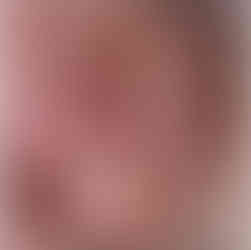Portfolios- How to Find a Good Piercer
- lynnloheide
- Jul 24, 2020
- 4 min read
Often, when looking for a good piercer or someone for a specific project, folks are told to “check portfolios! Make sure their work is good!” And this seems like common sense, of course you want to check someones work and ensure that they are doing things correctly, placement is aesthetically pleasing, jewelry is quality. But, how do you actually know what to look for?!?! In a world where every phone has an amazing quality camera, and anyone can edit and use angles, how does a client actually assess a portfolio and make sure they are seeing someone who does good work? Well, today I would like to discuss what to look for in a portfolio, and how to identify good work from bad.
Clear Photos

A clear photo is the first step for a good portfolio. The piercing should be in focus, and it should be easy to see the piercing itself. Often, photos will be in color, and good lighting. Dark, grainy, and blurry photos often disguise small issues about the piercings, or can even make it hard to tell exactly what is going on. I won’t say all black and white photos are bad, but I will say often lower quality piercers use black and white photos to disguise redness, poor angles, or poor quality jewelry. That said some amazing piercers have showcased quality work in black and white, but use a careful eye on these photos. I personally don’t post anything in black and white because of the stigma of using it to hide issues and faults with piercings.
Angles Are Awesome
With piercings its essential that they are perpendicular to the tissue they are pierced through. A good piercer often occasionally posts angle shots, or takes photos in such a way that it can be seen that the piercing is correct. Now sometimes jewelry is sitting off, or tilted, it make make things visually look off, but those photos shouldn’t make it to posting. If I take a photo of a piercing I did, but I forgot to adjust the jewelry or the client moved, I won’t post it even if the piercing itself was correct, because the jewelry is sitting in a way that can make things look off. Often, established piercers won’t post angle shots as much, this practice is more common with apprentices and younger piercers to showcase the quality of their work. That said, you should still be able to tell from the bulk of a piercers photos that things are coming out correctly! And remember, it’s about being perpendicular to the tissue pierced. This means for example, a triple forward helix, the piercings should go with the curvature of the ear and each one should be aligned as the ear curves. If you aren’t sure, you can always ask a piercer you trust for their opinion on the work you are seeking.
Healed Work Matters

Being a piercer is about more than just doing the piercing. It’s also about making sure it heals- not only performing a correct piercing but guiding a client through the process of healing it correctly. A piercer should post some healed work along with their fresh pieces as well. The more complicated piercings are the more crucial to see healed examples of- this includes surface, genital, and ear project work. A solid portfolio will have plenty of photos of fresh piercings, but should also include a good amount of healed work.
Jewelry Quality
Jewelry quality is obviously important when getting pierced. But when a metal ball looks like a metal ball from high quality brands down to the lowest quality, how do you know what to look for? Well, most quality piercers tag or list the companies they work with, and what is used in each photo. Looking for specific companies you know only produce in safe materials is a great first step. Beyond that, quality jewelry should have a mirror finish, pieces that look dull or scratched in photos are a warning sign. If you aren’t sure, ask the piercer about the jewelry used in their portfolio images. They should be forthcoming with the information, and you can always double check brands!
Messy?

We pierce people, which obviously means we deal with blood as a side effect of the job. We also use products to mark and clean the skin which can leave a fair amount of mess around things we pierce. That said, excessive blood, cleaner, or marks aren’t ideal in photos. Some, every now and again, is totally normal and happens. But if the majority of a portfolio has a lot of blood, dried blood, or general mess around the piercings, that’s a warning sign for sure.
It can be really hard to identify a great piercer from a bad one, and with your safety and health on the line it’s a real concern. Checking portfolios is an amazing first step to finding someone great to see. But, also ask good questions: about safe practices, jewelry, and education. Take time getting to know your piercer and the studio, and make sure you feel comfortable with them. Don’t be afraid to speak up or leave if you see something you know is wrong or questionable. Your health and safety comes first, always!











